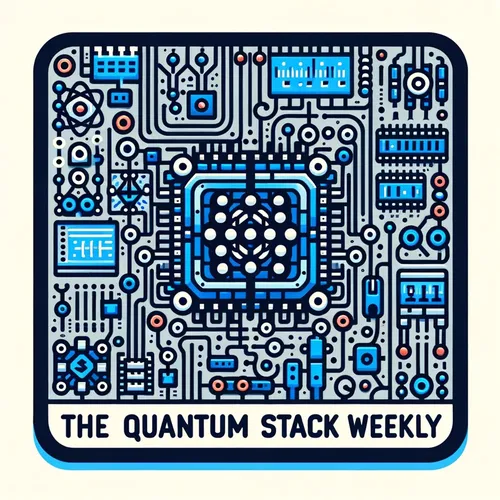Quantum Leaps: $10B Boost, Modular Marvels, and the Fault-Tolerant Future | The Quantum Stack Weekly
- Author
- Quiet. Please
- Published
- Fri 05 Sep 2025
- Episode Link
- https://www.spreaker.com/episode/quantum-leaps-10b-boost-modular-marvels-and-the-fault-tolerant-future-the-quantum-stack-weekly--67645349
This is your The Quantum Stack Weekly podcast.
Lights up, the hum of a dilution refrigerator echoes in my memory—cold enough to make Siberian winters blush. I’m Leo, Learning Enhanced Operator, and today, the quantum world crackles with electric possibility.
Yesterday, in an announcement that swept through research circles faster than an entangled photon, Quantinuum secured a $600 million capital infusion, pushing its pre-money valuation to $10 billion. Yes, $10 billion. Funding this size isn’t just news—it marks a shift: quantum computing has stepped decisively from speculation to industrial momentum. Quantinuum will use this cash to launch Helios, its next-gen quantum platform, and—here’s the game-changer—chase universal fault-tolerant quantum computing. Fault tolerance finally means reliable quantum answers, a far cry from the error-prone qubits we wrangled in the past. This scale of investment and capability eclipses many classical approaches: think cryptography redefined, pharmaceutical research turbocharged, even AI models trained at quantum speeds.
Now let’s blend the dramatic with the everyday. Imagine a data center—fluorescent-lit, rows of servers humming. Quantum processors soon sit beside AI accelerators on those floors, performing logistics optimizations too vast for traditional silicon. These aren’t distant dreams. Giants like IBM, Google, Honeywell, and startups like Quantinuum and IQM aren’t just building devices; they’re forging global alliances to redefine infrastructure, often partnering with institutions like RIKEN or NVIDIA’s Accelerated Quantum Research Center.
But today’s real showstopper is modularity—quantum systems snapping together like LEGO bricks. Researchers at the University of Illinois have demonstrated superconducting quantum modules with fidelity approaching 99%. Why is this revolutionary? Well, building a single, monolithic quantum system is like trying to construct a marble palace out of sand—it crumbles, errors seep in. Modular quantum architectures, in contrast, offer adaptability and resilience: smaller, high-quality chunks click together, forming an interconnected, scalable quantum fabric. If a module falters, you swap it out—a principle every engineer dreams of. It’s as if every piece of the puzzle is reconfigurable and self-healing, potentially lifting reliability and making quantum experiments less of a fragile art and more of an engineered science.
The implications stretch beyond bits and gates. Just this week, New Mexico partnered with DARPA to advance the Quantum Frontier Project. The goal—utility-scale quantum computing by 2033—harnesses national labs, private ventures, and academic expertise. Quantum is seeping into the bones of our economy, promising both groundbreaking jobs and existential cybersecurity challenges.
I find quantum parallels everywhere: the way a city pulses with possibility at dawn, how a cloud bank forks sunlight unpredictably. Quantum isn’t just about what’s probable—it’s about what’s possible, unfathomable until measured.
Thank you for tuning in to The Quantum Stack Weekly. If you’ve got burning questions or topics you want spotlighted, email me at [email protected]. Don’t forget to subscribe wherever you get your podcasts. This has been a Quiet Please Production—for more info, check out quietplease.ai. Until next time: keep your qubits coherent, your possibilities superposed, and your curiosity entangled.
For more http://www.quietplease.ai
Get the best deals https://amzn.to/3ODvOta
